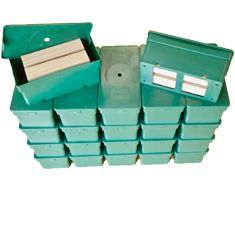Termite Inspections Can be Done by Most Homeowners… or a Younger Member or Friend of the Family
A White Ant Inspection is the Same Thing
Of course, if you are buying a home, it is not your home yet so, you get a professional to do the termites inspection. They call it a Timber Pest and Building Inspection which also covers borers, decay and maybe structural factors.
Ask the questions before you give them the job.
Read more: Are Termite Inspections Required
In Fact, You Will Probably do a Better Job of Inspecting Your Home for Termites Than Many Professionals
Here’s why it’s going to be better if you are the one doing the termite inspection!
Professionals issue reports with fine print which gives them many let-offs. They can’t and won’t accept responsibility for timbers they can’t actually see and timbers they can’t get to, for example, the wooden framework between the plasterboard inside and the outside wall, roofing timbers covered by insulation or sarking and they don’t shift heavy furniture to look at the skirting boards or move things in the linen press and built-in wardrobes.
But you will certainly be diligent and go to a bit of extra trouble because it is your home and you will move the sofa and push things aside in the linen press when doing a termite inspection, won’t you?
Think about it for a moment.
If professionals are only going to inspect for termites on the interior (skirting boards, window/door frames, etc) and the roof trusses they can actually see, and, if there is no underfloor area because your home is built on a slab — my question is: what are they going to check that you can’t?
If You Give Yourself this Termite Inspection Job, Essentially You’ll be Looking for ‘Mud’
Subterranean termites come up from the soil and when they leave it they use their ‘mud mix’ of dried saliva and soil to protect themselves and to reduce the loss of humidity. This ‘mud’ you’ll be looking for comes in the form of tunnels over impervious surfaces (or timber they’d rather not eat).
They use mud to seal up splits, cracks, grooves, and joints in timber. Here are some photo examples:
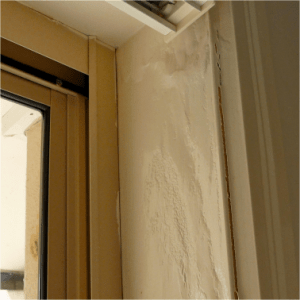
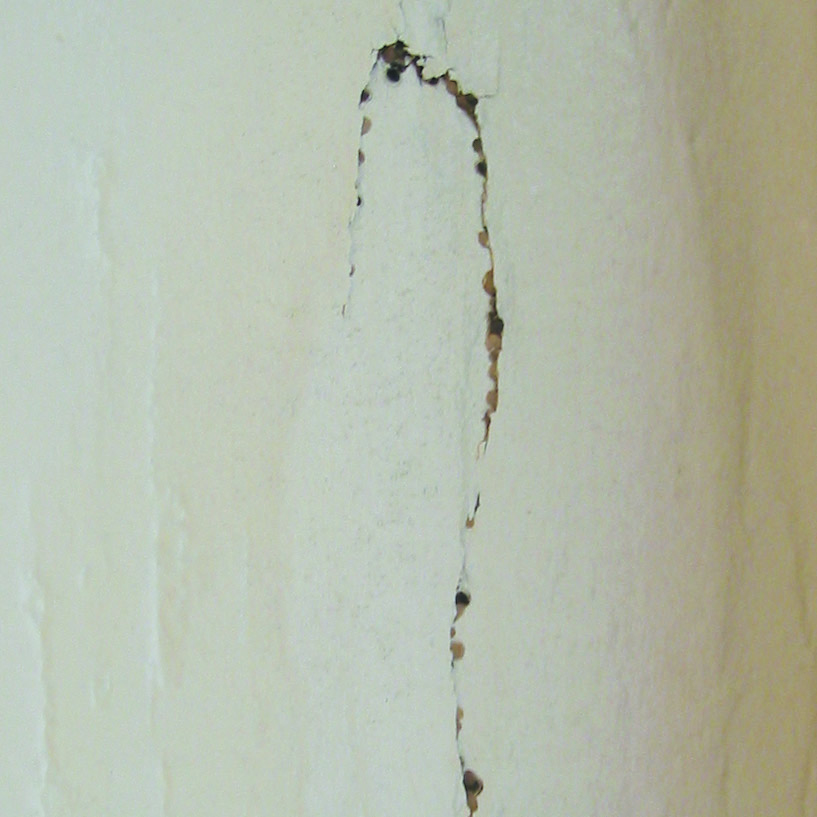

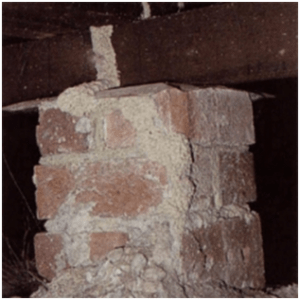
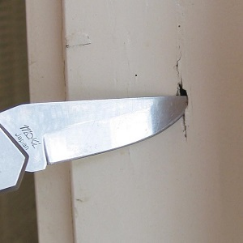
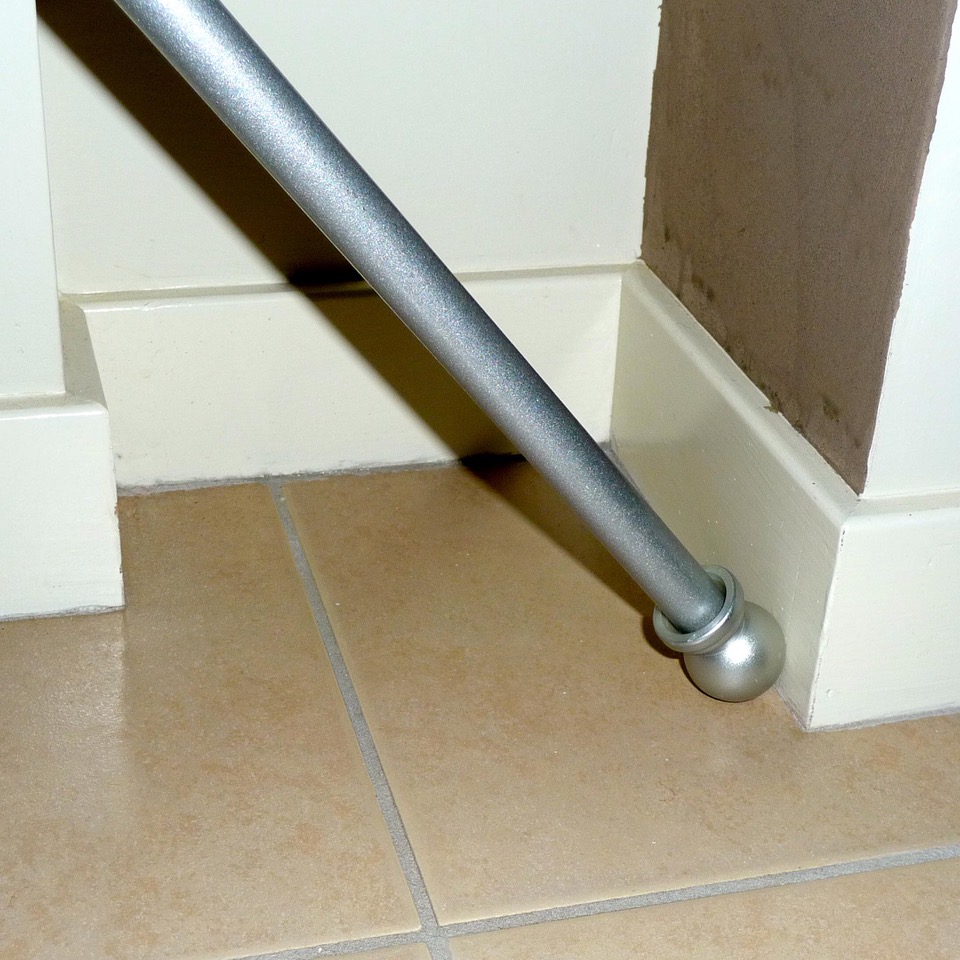
Apart from looking for ‘mud’, during your termite inspections, you will need to look out for timber surfaces (painted or not) that are uneven or wavy, and distorted. You will also be using your ears. Running a tool over a timber surface gives you a sound you will quickly recognise as normal. When you hear it changes to a hollow sound, you investigate more closely with a sharp-pointed knife or fine screwdriver.
Sometimes termites only leave the paint and pressing gently you will feel the lack of solidity. With the blade aligned to the grain or length of the wood, insert it into the timber and twist (gently, always gently). Hold the little split open for a few moments; you may see the antennae or other movements of the workers and soldiers inside.
Also using your ears, tapping can produce a reaction from soldiers inside the timber which sounds a little like the ratchet of an old-fashioned watch; if there are hundreds in there, it can sound like dragging a screwdriver slowly over very coarse sandpaper.
The Termite Inspection Process
Your Tools:
Eyes, ears, a bright torch/flashlight, a knife or small screwdriver and a stepladder to get into the roof void.
And a cloth to wipe your dirty finger marks from the manhole cover as you come down.
You could make a long-handled-sounding implement to tap or run along skirting boards without having to stoop or save some crawling to reach timbers on the roof or under the floor.
I use a bit of left-over curtain rod with a round plastic finial so it doesn’t scratch or mark. (See photo). Golf putters have been used successfully.
Inspecting Inside:
Start at the front door and begin tapping the architraves and skirting boards looking for signs of termite activity. With a torch in one hand shining along with the timbers, it is easier to detect uneven surfaces in oblique light. Tap or run your tapper/putter, or your screwdriver along with every moulding you pass until you are back at the front door.
This is where you beat the professionals because you will shift the sofa, and the beds and you will look in the built-in wardrobes and the linen press – won’t you?
Inspecting the Roof:
If you haven’t found termites inside, you may feel it is a waste of time and energy to go up on the roof.
Why bother? Because it’s your house. And your $thousands in repair costs if termites went straight up the studs into the roof without hollowing out any of the interior mouldings. Sure you won’t excavate every ceiling joist or rafter from the insulation, but you can crawl/walk/clamber along and shine your torch along the trusses looking for mud tunnels or mud packing in the joints, particularly over the bathrooms, laundry and kitchen. Who knows — you may find something else important while you are up there such as daylight coming in through a cracked tile, rats or possums, a fire hazard from insulation over the downlights, etc.
Inspecting Outside For Termites:
In your garden, move the top layers of mulch and leaf litter while you inspect for termites. Look at plant stakes, fences, wooden steps, retaining walls, posts, and wooden seats and you should tilt or lift plant pots (the potting mix is high in wood fibre).
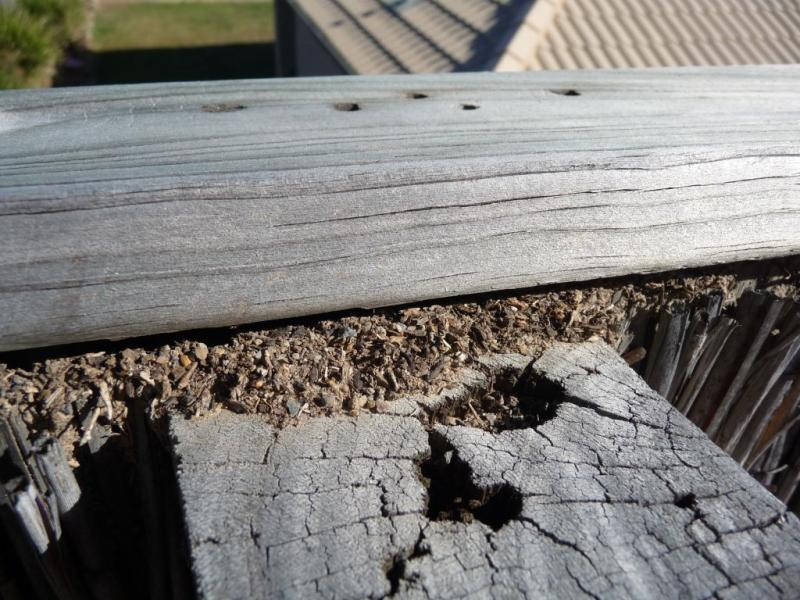
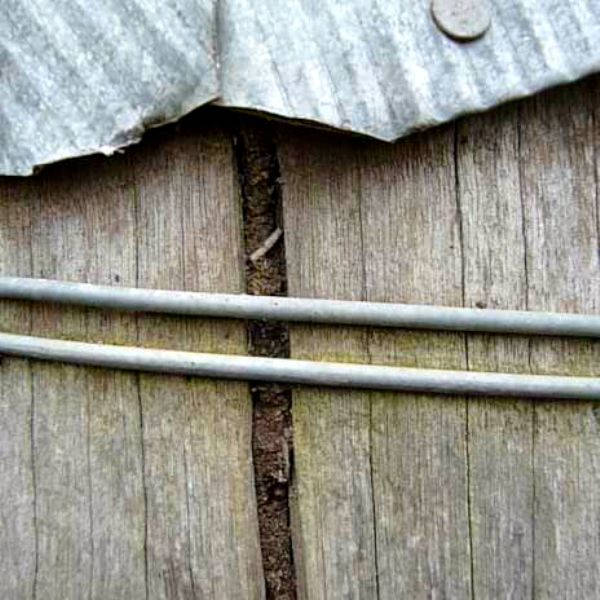
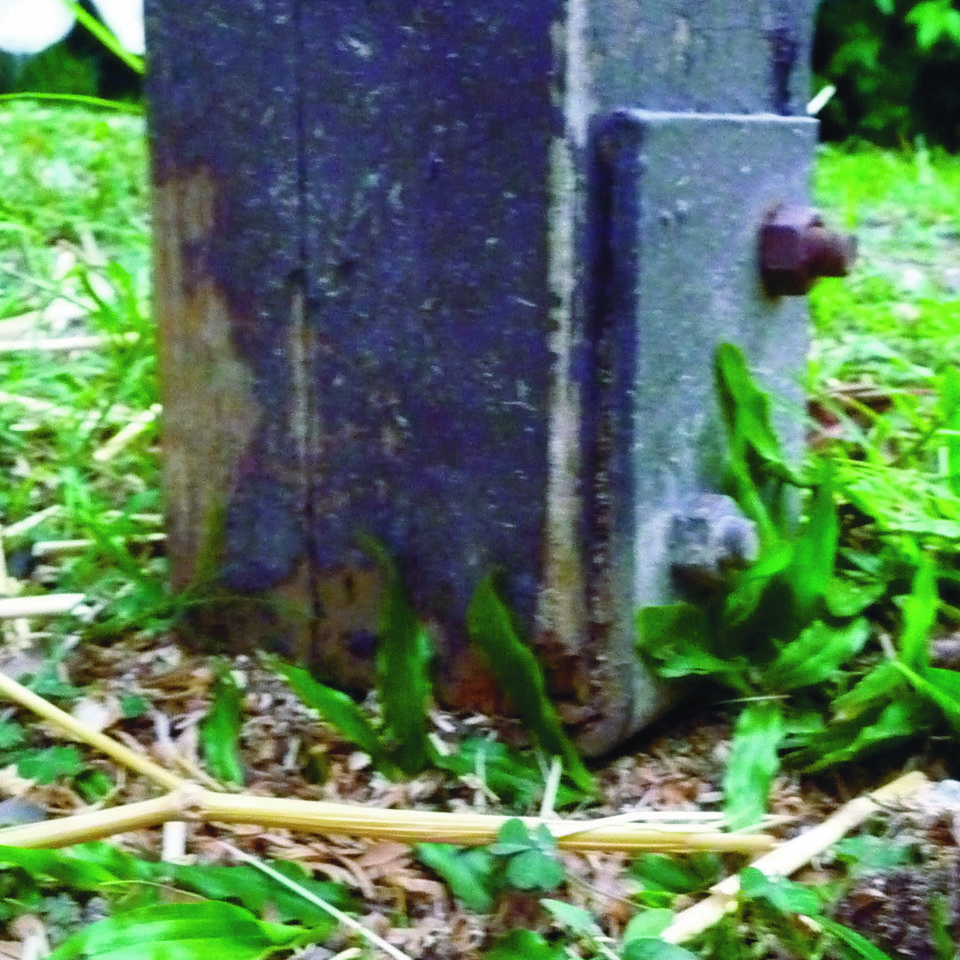
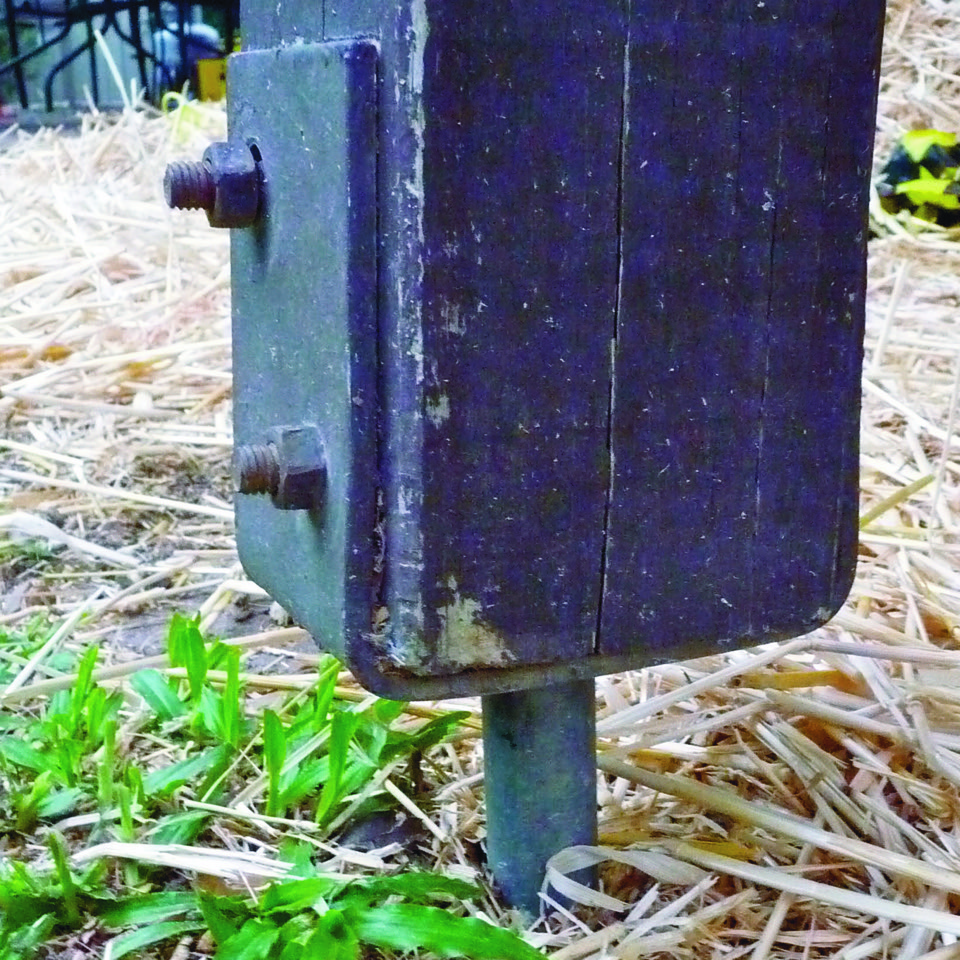
If you have a concrete slab-on-ground floor, now is the time to check every weep hole for activity during your termite inspection. You’re looking for ‘mud’, remember? The tunnels if any, will probably follow the mortar joint between the bricks, or if no bricks…straight up and in. If plants such as mondo grass, creepers or other ground covers are blocking your view, it is time to cut them back or remove them… your house is at stake!
Look for possible ‘bridges’ that allow termites to traverse across from soil to the building. These bridges take many forms: pergolas, pool pump screens and pump houses, kennels, cubby houses, fences, gateposts, firewood, and stacked timber. If you find anything suspicious, remember to be gentle. Alive and working termites are to be preserved at all costs because they are the ones that take the bait back to kill off the colony.
Inspecting For Termites Underneath:
If you have a house you can get underneath, now is the time. The good thing about suspended flooring is that there is more space between the timber in the floor and the termites in the soil and you will be able to detect any tunnels up the foundation walls or piers/stumps.
Pay particular attention to corners, damp areas, chimney bases, and the top of the foundation walls under bathrooms, laundry and patios. Of course, there are often stored treasures such as boxes, taxation papers, and bits of wood that might come in handy one day (get the idea?). Look carefully and move anything gently and inquisitively during your termite inspection. And then find somewhere else to store them… or get rid of them altogether!
Summary of How To Do A Termite Inspection
You can have great chemical and physical barriers; you can even put a double ring of monitors all around your backyard yes, you may have already killed off a colony or several, but believe me, since Captain Arthur Phillip had his first tent pegs eaten by termites in 1888, termites have found a million ways to get to the wood in Australian buildings.
Inspecting for termites at least once a year will give you a great chance to find evidence before a door falls off or a broom goes through a skirting board. Feel free to check and ask TermiKill now.
I suggest you do your termite inspection during the first week of spring and the first week of autumn because it is not as hot up on the roof and not freezing underneath. Or you can contact us for more detailed information.
Also, if you find termite galleries, they are more likely to be occupied. Hot timbers in a roof may be vacated during the day when you inspect and you’ll miss out on possibly hearing their return tapping.
You have done essentially what you pay professionals to do – at no cost… unless you get your child to do it. (Then it could cost you a baked dinner for the whole family). Bargain!
Questions & Answers
How Often Should I Do a Termite Inspection?
Most of Australia is considered high termite risk.
Every 12 months is recommended but if you have had termites before, more frequent inspections.
Are All Termites Dangerous to My House?
No
There are over 350 different termite species in Australia, but just a few are found to destroy homes.
Is Termite Damage Covered by House Insurance?
No.
House insurance does not cover any damage caused by termites or subsequent damage they created.
Additional Information
You can download our free How-to-Guide
Check out the rest of our website and shop
OR speak to a friendly, helpful human… 1800 20 30 20
OR click here to open a chat
